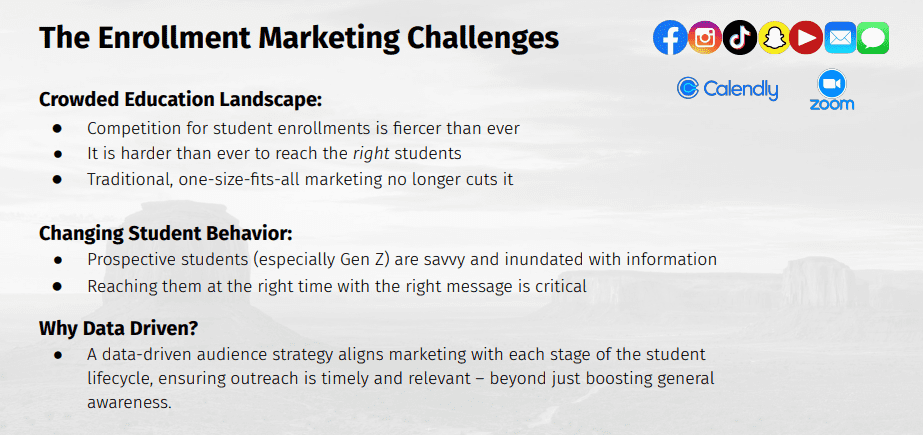Data-Driven Enrollment Marketing: Education CMO Playbook
The New Reality for Enrollment Marketing Leaders
Education marketing has entered a defining moment. Student behavior has fragmented, the cost of media has climbed, and the traditional “more leads = more enrollments” equation has collapsed.
Marketing leaders must now deliver growth under pressure and be accountable not for clicks or leads, but for starts and outcomes. Prospective students research across multiple platforms, weigh ROI on education, and expect personalized communication.
Meanwhile, the elimination of third-party cookies and tightening privacy rules have disrupted the way institutions reach and track potential students. For CMOs and directors of marketing at colleges, universities, and skilled-trade schools, the only sustainable path forward is data-driven enrollment marketing and a framework built on clarity, accountability, and precision targeting.
Why Data Defines Enrollment Success
The modern enrollment landscape runs on data. Institutions that understand their numbers, how prospects behave, which channels convert, and what patterns predict persistence are outperforming peers who rely on instinct or outdated reporting.
Recent research from UPCEA and Search Influence reveals that fewer than half of higher-education marketers track cost per inquiry (46%) or cost per enrolled student (43%), even though the average cost per enrolled student is $2,849. That lack of visibility leaves decision-makers unable to prove marketing’s impact or optimize for true return on investment.
Meanwhile, 47% of higher-ed marketers report satisfaction with campaign performance, and only 38% feel confident their spending aligns with enrollment goals. The data tells a clear story: most institutions are investing in marketing without the precision needed to drive measurable outcomes.
Digital transformation adds another layer of complexity. According to ZipDo’s education marketing report, roughly 60% of higher-ed marketing budgets are now allocated to digital channels such as paid search, SEO, and social media yet more than half of those same marketers lack a unified SEO strategy. The opportunity lies not in spending more, but in connecting the dots between media, data, and outcomes.
Three principles now define enrollment success:
Data clarifies fit. Understanding which student profiles lead to persistence and graduation ensures resources target the right audiences.
Personalization builds trust. Students respond to timely, relevant communication mapped to their individual journey.
Measurement aligns teams. Optimizing cost per enrollment instead of cost per lead makes marketing accountable to the results leadership values most.
Data is no longer a report it’s the strategy. Institutions that can unify systems, interpret signals, and act on insights will outperform those that still see marketing as a collection of disconnected tactics.
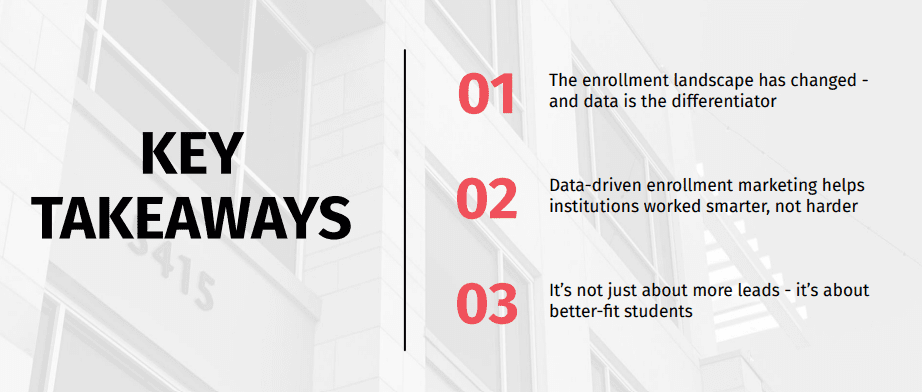
Building Smarter Audiences with 1st-, 2nd-, and 3rd-Party Data
First-Party Data: The Foundation of Predictive Enrollment
The CRM and student information system (SIS) represent your institution’s most valuable assets. By analyzing historical inquiries, applications, and enrollments, marketers can identify the traits of high-performing students program interests, geographies, employment background, and digital behavior.
Patterns emerge: evening students may persist longer in trade programs, or students within a 25-mile radius may convert at a higher rate. These insights drive targeting precision and media efficiency.
Second-Party Data: Partnership Power
Second-party data expands reach through trusted collaborations like job boards, testing platforms, or local workforce agencies. When anonymized and shared responsibly, this data reveals new audiences that resemble your best enrollees while maintaining privacy compliance.
Third-Party Data: Enrichment, Not Dependency
Third-party datasets can enhance demographic and psychographic understanding but should serve as a complement, not the backbone. As privacy evolves, reliance on these datasets must decrease in favor of owned data ecosystems.
“Data should never replace human insight, it should amplify it. When we use data to truly understand what students value, what challenges they face, and what inspires them to act, marketing becomes more than performance metrics. It becomes a bridge between people and possibility.”
– Jordan Schuster – COO Colling Media
Using Predictive Modeling to Prioritize Quality Over Quantity
Predictive modeling transforms enrollment marketing from reactive to proactive. By using AI and machine learning, marketing teams can predict which inquiries are most likely to become enrolled students.
A mid-sized healthcare college used predictive modeling to identify leads interacting with tuition and career outcome content. Those prospects converted at 2.3x the rate of other inquiries, allowing reallocation of 25% of media budget toward high-intent audiences and reducing CPE by 27%.
How Predictive Systems Improve Efficiency
Lookalike modeling: Find new prospects who mirror your most successful students.
Partner & 3rd-party data: Expand audience pools responsibly.
Predictive lead scoring: Prioritize admissions efforts based on behavioral likelihood.
Scaling with quality: Grow enrollments without compromising fit.
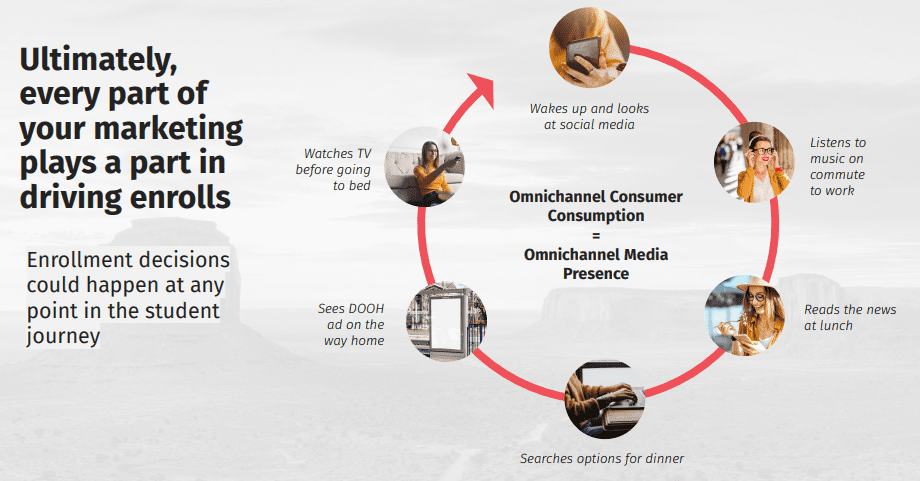
Connecting Channels for a Unified Student Journey
Students engage across multiple touchpoints search, social, programmatic, email, even connected TV. Institutions that deliver consistent, personalized messaging across these channels build stronger brand recall and shorten the decision cycle.
Breaking Down Silos
When marketing systems operate independently, opportunities are lost. Integrating CRM and advertising platforms allows for coordinated communication retargeting site visitors, excluding enrolled students, and syncing ad creative with inquiry status.
Omnichannel Orchestration
Every platform plays a role: search drives intent, social builds trust, and CTV deepens engagement. A study by The Trade Desk found that campaigns spanning multiple programmatic channels achieved 35% higher conversion rates than single-channel efforts.
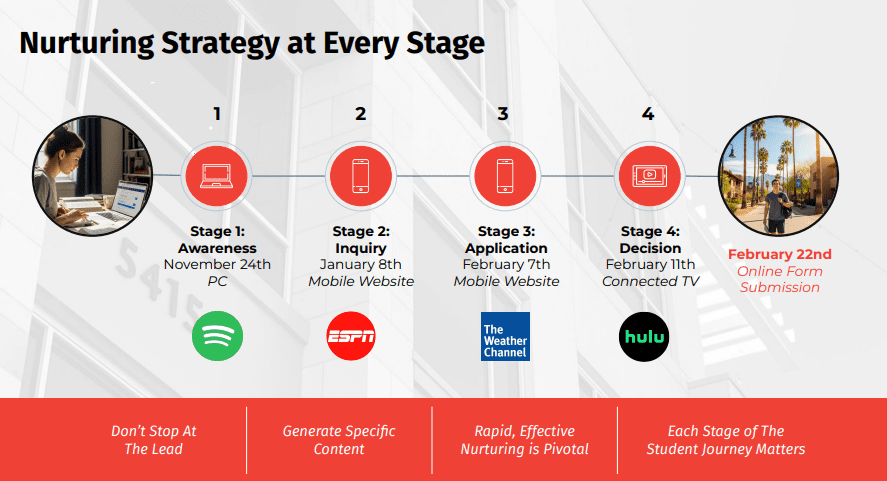
Nurturing With Precision: From Lead to Start
A student’s first inquiry is only the beginning. Institutions that nurture effectively through data-driven timing and personalized content consistently outperform peers that rely on manual follow-up.
Key Components of Lifecycle Nurturing
Immediate response: Automated confirmation messages within minutes of inquiry.
Stage-based sequencing: Tailor messaging for inquiry, applicant, and re-engagement stages.
Program-specific proof: Show evidence of success like externships, certifications, and student outcomes.
Human continuity: Assign a single advisor where possible.
Behavioral triggers: Invite re-engagement through activity-based automation.
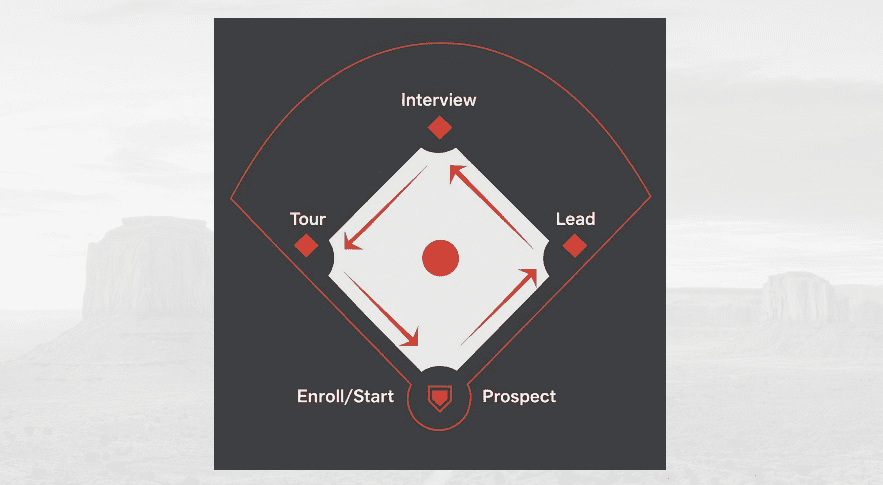
“Reaching the right student with the right message at the right time isn’t luck. It’s data. When insights guide how and when we communicate, marketing aligns with the student journey and results follow.“
– Tyler Fridley, Colling Media Director of Client Services
Measuring What Truly Matters
From CPL to CPE
Institutions that transition from cost-per-lead to cost-per-enrollment metrics achieve more sustainable growth. According to McKinsey, education organizations using outcome-based metrics saw a 40% improvement in ROI attribution accuracy.
Closed-Loop Reporting
Data transparency is essential. Linking CRM outcomes to media performance allows marketers to:
Attribute enrollments back to specific campaigns
Identify underperforming channels
Reallocate spend in near real-time
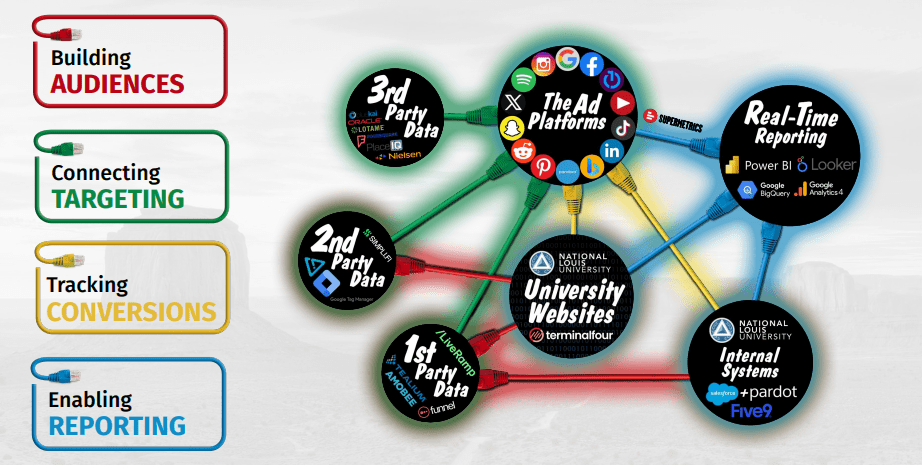
The AI-Powered, Privacy-Safe Future of Enrollment Marketing
Artificial intelligence is revolutionizing student recruitment. AI models can dynamically segment audiences, forecast enrollment probabilities, and personalize creative assets. However, responsible use of data must be central to every strategy.
Education marketers are increasingly adopting clean rooms and data collaboration environments to maintain compliance while improving targeting accuracy. These environments allow shared insights between partners such as ad platforms or education directories without transferring raw student data.
The future will reward institutions that blend AI efficiency with ethical transparency, ensuring personalization never compromises privacy.
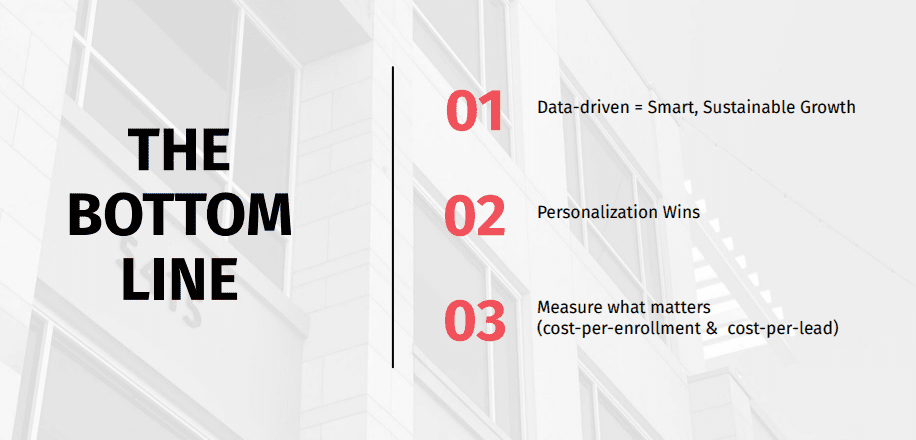
FAQ
What is data-driven enrollment marketing?
It’s an approach that uses first, second, and third-party data to identify high-fit students, personalize communication, and optimize marketing toward measurable enrollment outcomes.
Why is first-party data essential for colleges and trade schools?
First-party data reflects real student behavior and outcomes, enabling schools to build lookalike models and messaging strategies based on proven success profiles.
What is the difference between CPL and CPE in education marketing?
CPL measures lead generation efficiency, while CPE focuses on the true cost of converting an inquiry into an enrolled student aligning marketing spend with institutional goals.
How can AI improve enrollment marketing?
AI enables predictive lead scoring, dynamic audience segmentation, and real-time personalization—helping institutions reach the right students at the right moment with minimal waste.
How do privacy-safe data practices impact enrollment marketing?
Privacy-safe environments allow institutions to analyze and activate shared insights without exposing personal data, ensuring compliance with FERPA, GDPR, and evolving U.S. state laws.
How can marketing and admissions work better together?
Integrated dashboards, predictive scoring, and shared KPIs create alignment between marketing’s top-of-funnel activity and admissions’ conversion goals.
What are the emerging trends shaping student recruitment?
Expect AI-driven media optimization, data collaboration clean rooms, and the rise of unified attribution models connecting every marketing touch to final enrollment.
Conclusion: From Data Chaos to Data Clarity
Education marketers stand at the intersection of technology and transformation. The next wave of growth will come not from more media spend, but from smarter systems that integrate CRM data, predictive modeling, and omnichannel orchestration.
Institutions that achieve data clarity will dominate the next decade of enrollment growth. The future will not reward those who shout the loudest it will reward those who listen best, learn fastest, and adapt first.

